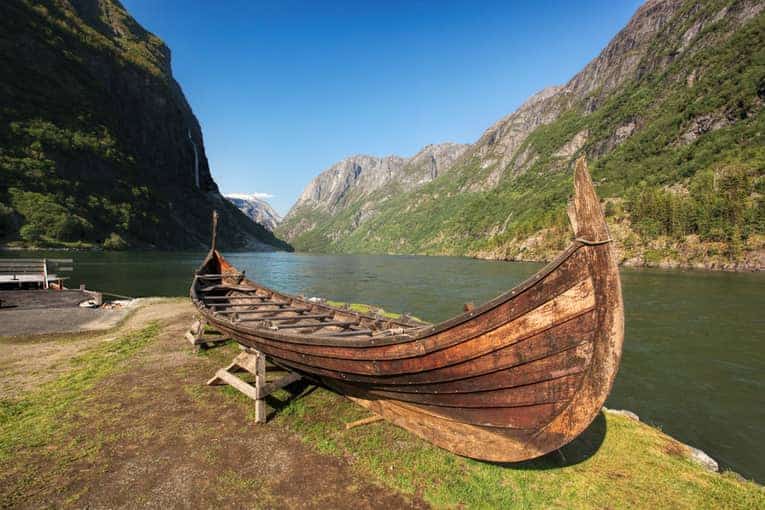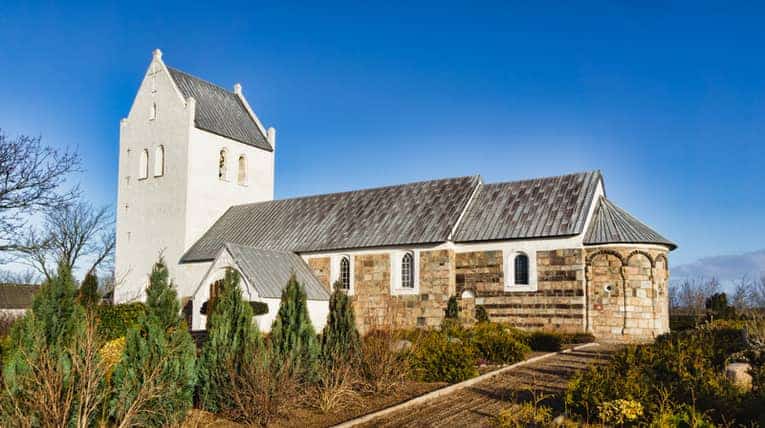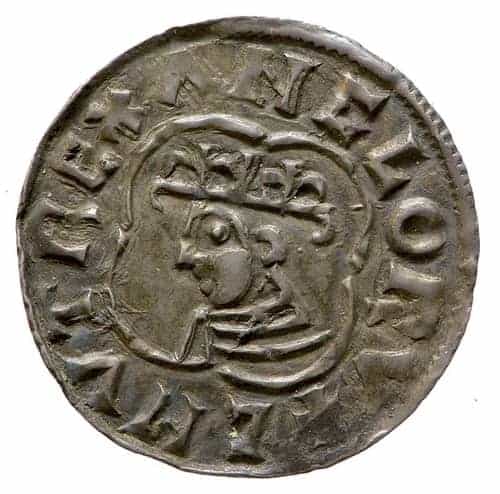For several centuries, the Vikings of Scandinavia ruled the waters and land of Northern Europe.
The ancient Norsemen were explorers and warriors who sped through rivers and seas to raid and conquer wealthy and often unsuspecting people.
Yet despite the Vikings’ dominance and achievements, the notorious Scandinavians vanished from history. But why?
The fate of the Vikings cannot be told in a single story.
The Norsemen did not disappear in a moment, but faded over time.
Multiple factors contributed to their demise and decided their destiny, especially the rise of Christianity and the decline of slavery in Northern Europe.
The factors that contributed to the Vikings’ downfall are interconnected, but they are not equal.
It took nearly a millennium for Christianity to make significant inroads in Scandinavia, but when it did, over time, it was substantial.
Collectively, the region’s worldview shift led to changing ethics and cultural norms that ended one of the backbones of the Vikings way of life, which was kidnapping people and employing slaves.
The Vikings have a fascinating history in Scandinavia. See Scandinavia Before the Vikings to learn more.

Why did the Vikings disappear?
“The Viking age did not end suddenly,” writes the Welsh historian, Gwyn Jones. [1]
Like their rise occurred as a result of various successes and victories, their downfall was also the product of a combination of internal and external factors.
The top reasons included:
- The rise of Christianity: Christian missionary efforts initially met resistance in Northern Europe, but because of religious zeal and financial support, the Christianity eventually broke through and Scandinavia was never the same.
- Defeat in battle: In the last century of their reign, the Vikings suffered debilitating defeats. They lost key leaders and numerous warriors. Additionally, lands they held were lost and new land was not acquired. Their security teetered with every failure.
The Rise of Christianity
Christianity experienced rapid growth in Europe between 950-1050 A.D.
Christians went from being the target of Scandinavian Vikings, to converting the pagans from the religion of Norse paganism to the faith of Jesus Christ.
Collectively, the result was nothing less than a complete transformation of the region because, as Jones states, “Nothing was more characteristic of the northern lands than the Old Norse religion.” [2]
In the region, Denmark and Norway converted first and were largely Christian by 1,100 A.D.
Sweden eventually followed the lead of their Scandinavian neighbors and was largely Christian about a century later. [3]
Iceland converted to Christianity in 1,000 A.D. Greenland’s conversion is historically marked as 1,001 A.D.
Many of the residents living on Scandinavian islands, like the Orkney’s, turned away from paganism and to the Christian faith in the following decade.
The first missionaries arrive: During the reign of Louis the Pious (778-840), son of Charlemagne, and the Archbishop of Hamburg in present-day northern Germany, Christian missionaries began traveling into Scandinavian lands and making converts.
This was the Christian church’s first significant effort to evangelize the region.
Missionary efforts failed at first for the Norseman strongly resisted the Christian gospel.
Some European church leaders discussed no longer funding evangelistic missions to Scandinavia, but instead, redirecting those resources elsewhere.
Only the intervention of the Pope prevented the discontinuation of missionary efforts.
Some Vikings convert away from home: While missionary activity in Scandinavia ebbed and flowed, the Vikings that settled in other countries after raiding them, like England, Ireland, and parts of Germany, began to convert to the faith of their new surroundings, which was Christianity.
With every new convert, the Norse worldview faded more and more from the region.
In accordance with the teachings of the New Testament, many of the new Viking converts were baptized. Some eventually rose to leadership positions in their local churches.
Many Vikings adopted a Christian identity, biblical values, and a new way of life, as the medieval Latin church taught.
Missionary efforts breakthrough in Scandinavia: In the later half of the 10th century, like a breached dam, the Christian faith poured into Denmark, Norway, and Sweden.
Individual conversions often turned into community conversions:
- When a man turned to faith, so did his wife and children
- When a chieftain turned to faith, so did his village
- When a king turned to faith, so did his country
Some conversions were nominal; that is, people converted in name only. Why would some Vikings convert in name only?
If they didn’t not genuinely believe the Christian gospel, why not just stay committed to Norse paganism? There are numerous possibilities.
Here are two examples:
- Power: Some people may have outwardly identified as Christian for political reasons. If a man had political responsibilities or ambitions, he may have reasoned that it would be easier to rule professing Christians if they believed their overlord shared their faith.
- Authority: If an authority figure converted to Christianity, his subjects may have decided that it was in their best interests to do so as well. Though their belief may not be genuine, they could still identify as a Christian and outwardly demonstrate allegiance through baptism and church attendance, for two examples. People this may describe include, wives and children and slaves.
Even if some, or many, of the conversions were inauthentic, old Norse ways were nevertheless abandoned.
Even if old rites and rituals were practiced in private settings, the public influence of the old faith diminished.
Simultaneously, the amount of Christian churches increased.
Outside influences also increased. Many English missionaries in particular helped plant and establish new churches in Scandinavia.
They taught Viking converts the bible, baptized them, and trained leaders for churches.
The decline of the Vikings looked different in each Scandinavian country.
The Vikings were religious people. See Were the Vikings Christian? to learn more.

Vikings decline in Denmark
Denmark, the Scandinavian country in closest proximity to the Christian nations of Europe, was the first Norse stronghold to convert to Christianity.
In 950 Harald Bluetooth (d. 986), the king of Denmark, was baptized.
As would be expected, this significantly influenced the country. A runic inscription from the time reads:
King Harald bade these memorials to be made after Gorm, his father, and Thyra, his mother.
The Harald who won the whole of Denmark and Norway and turned the Danes to Christianity.
Shortly thereafter, churches began to appear in Denmark as did bishops to oversee them.
Pagan religious influences remained strong for some time but weakened when Canute (d. 1035) came to power.
Canute’s oversight included Denmark, England, and in one period, Norway.
In the last two decades of his life especially, Canute seemed driven to strengthen the Church’s influence in Northern Europe.
He even traveled to Rome and instructed people to learn the Lord’s Prayer and take communion.
Christianity grew from an acorn to an oak under his influence. His Canute’s Christian influence on Denmark cannot be overstated.

Viking decline in Norway
Haakon the Good (d. 961) played a significant role in the decline of the Viking way of life in Norway.
Son of pagan king Harald Fairhair, Haakon rejected his father’s old Norse religion, in part, through the influence of English Christians who taught and advised him.
Haakon tried to persuade Norwegians to convert to his Christian faith, but was largely resisted.
Harald Bluetooth also tried to persuade Norwegians to convert to Christianity, but his his efforts were unsuccessful.
Olaf Tryggvason (d. 1,000) was the first to have widespread evangelistic success in Norway.
Raised by Vikings, and a participant in raids on England, Tryggvason converted to Christianity and was baptized on the Scilly Islands.
He was later confirmed by the Bishop of Winchester.
Tryggvason was elected king of Norway in 995 A.D.
He encouraged all Norwegians to convert to Christianity and be baptized. When some refused, he forced them to convert and be baptized.
Tryggvason destroyed pagan religious cites, sometimes killing their adherents. He died in battle in the year 1000.
Another descendant of Harald Fairhair, Olaf Haraldsson (d. 1030), also significantly impacted Norway for Christianity.
Like Tygvasson, he was raised a Viking and participated in raids. In 1015 he took the throne of Norway.
Haraldsson, mostly known in history as “St. Olaf,” stabilized the Christian church in Norway in ways his processors had not.
He used priests and bishops to oversee the young churches and to teach new converts.
Haraldsson visited local churches to see for himself the work being done in them.
He also enacted laws that attempted to cement Christian morality in society. Haraldsson was killed in 1030 as a result of a pagan uprising.
Christianity’s impact on Norway was permanent.
Norwegian churches continued to grow, helped by English missionaries.
By the later part of the 11th century, Norway was divided into parishes with priests.
In 1152, Norwegians themselves began to oversee Norway’s churches, instead of Englishmen and Frenchmen.
The Vikings had similarities and differences with other people groups in the Middle Ages. See Did the Vikings Have Clans? to learn more.
Viking decline in Sweden
The Viking way of life declined slowly in Sweden, just as it did elsewhere in Scandinavia.
In the early 10th century, a small number of Swedes had converted to Christianity, but churches did not take root and the faith remained on the periphery of society.
Some Swedes converted and were baptized while doing business in countries like England, bringing their new faith home with them.
Despite a lack of explosive growth, Christianity held on in Sweden.
Historical records reveal that bishops rose in the later half of the 10th century, a Swedish king, Olof Skotkonung (d. 1022), was baptized and made a bishop.
English missionaries continued their efforts to evangelize.
At the same time, Christianity becoming firmly established in the lands of their Scandinavian neighbors, Norway and Denmark.
By the 11th century, Christianity was largely established in Sweden. Swedish Christians were given the ability to govern their own ecclesiastical affairs in 1164.
The center of the Swedish church was Uppsala.
The cathedral built there was constructed over a pagan holy site with symbolic meaning.
The old Norse religion lay in rubble and to a significant degree, the Viking way of life along with it.
By the 12th century, Christianity’s roots were planted and growing in Sweden, thereby establishing it in Scandinavia.
Viking decline in Scandinavian Islands
Vikings conquered and spread their way of life to many of the islands around Northern Europe in the 9th and 10th centuries.
These islands included those around present-day England and Scotland and all the way West to Greenland.
Yet wherever the Viking way of life spread, Christianity eventually followed a few centuries later.
Olaf Tryggvason led the effort to convert the inhabitants of the Orkney Islands, the Faroe Islands, and the Shetland Islands.
There was already some Christian influence on these islands, which made the faith less foreign to some.
Yet there was still resistance, especially on the Orkneys, where Tryggvason forced conversions and baptisms.
Norwegians immigrated to Iceland in large numbers in the 10th century. Missionaries were working on the island late in that century.
As people began to convert, conflict arose with pagans who resisted the new faith.
Compromises were reached that combined elements of each belief system.
For example, the baptized people still offered pagan sacrifices with little consequence.
Paganism eventually waned. Olaf Haraldsson provided the materials for the first church.
Locals were trained to be church leaders and received training from mainland Europe.
Iceland’s population was less than 10,000, perhaps less than 5,000, so it was once Viking, but now the land had become Christian.
Slavery declines
The decline of slavery also contributed to the disappearance of the Vikings. Constantly raiding and killing their European neighbors resulted in fewer people to take back to Scandinavia to enslave.
“There were no new lands to settle,” writes Jones, “no old ones from which to dispossess English, French, or Irish householders.” [4]
As a result, the Vikings’ labor force, particularly on Scandinavian farms, diminished, as did the goods they produced.
This put strain on Viking families. Sons had to do more work because forced labor was in decline. [5]
The Viking way of life was proving unsustainable.
Their movement could be powered for only so long before their ways would retreat and die.
The most sensational manifestation of Scandinavian history and civilization as it is recorded in other Scandinavian sources, that is, the Viking Movement, the excursus abroad, was grinding to a halt. [6]
Christianity also argued that the slave trade was immoral. As Vikings converted to Christianity, the practice of slavery waned.
One of the primary sources of profit for the Vikings had been slave-taking from other European peoples.
The medieval Church held that Christians should not own fellow Christians as slaves, so chattel slavery diminished as a practice throughout northern Europe. [7]
Though in decline, sporadic slaving continued into the 11th century.
The Vikings’ demise: timeline of key events
Key Deaths
954 – Eirik Blood-axe killed in England; Eric Haraldsson, also known as Eirik Blood-axe, whose stories are told in Norse sagas, showed strength in conquering but weakness in ruler.
961 – Hakon the Good killed at Fitjar; Haakon Haraldsson, a 10th century king of Norway, was the victim of a surprise attack from a son of Eirik Blood-axe while at his home in Fitjar.
In the ensuing battle, an arrow was shot into the king’s arm, wounding him and eventually taking his life.
970 – Harald Greycloak killed in Limfjord; Harald Greycloak, a 10th century king of Norway, was lured to Denmark where he was killed as an act of revenge.
995 – Haakon Sigurdsson killed in Trondelag; After losing the support of his people, who committed to another ruler, he was killed by his own slave who found him hiding in a pigsty.
1000 – Olaf Tryggvason killed in Svold; Olaf Trygvasson, a 10th century king of Norway, died in the Battle of Svolder, when, after being cornered on his ship, he lept overboard into the sea.
1035 – Svein Knutsson died in Sweden; Svein, the son of the 11th century Danish King Cnut, was sent to rule Norway.
He eventually had to flee due to the dislike of the people and died soon after.
1030 – Olaf Haraldsson killed at Stiklarstadir; Olaf II Haraldsson, an 11th century Norwegian king, died at the Battle of Stiklestad after some of his own men turned on him.
The Encyclopedia Britannica refers to him as the last Viking chief:
Olaf II Haraldsson of Norway, before he became king in 1015, was practically the last Viking chief in the old independent tradition. [7]
1043 (est.) – Jomsborg-Wollin was destroyed; King Magnus the Good destroyed the Norse fortress at Jomsborg-Wollin, killing most of the residents.
1050 (est.) – Hedeby destroyed; King Harald Hardrada destroyed the town of Hedeby. He floating burning ships into the harbor, which ignited the nearest structures and the flames spread.
1052 – a significant setback in Ireland; As a result of several skirmishes around an important fortress, Diarmait drove the Norse leader Echmarcach away from Dublin and out of Ireland.
1065 – death of Thorfinn Sigurdsson; Thorfinn Sigurdsson, known as Thorfinn the Mighty, was an 11th-century Earl of Orkney. Mystery surrounds his death.
1066 – To some historians, the death of Harald Hardrada death’s at Stamford Bridge when attempting to take the English throne, and the subsequent unsuccessful Danish attemtps to take the English throne, mark the end of the Viking age.
While some raiding continued, the Vikings were more often being raided, especially by Salvic tribes from across the Baltic Sea.
1171 – Orkney Islander, Svein Asleifsson, was perhaps the last Viking. Asleifsson and his 80 followers raided twice a year, once in the Spring and once in the Fall.
He pillaged places in Ireland and England, for example. He did not survive a raid in Dublin in 1171.
1263 – Norse rule was in its twilight when the 13th century started. In 1263 King Hakon IV of Norway died in Orkney after attempting to regain a foothold in the region.
Man and Hebrides were sold back to Scotland in 1266 by Hakon’s successor Magnus VI.
Remembering the Vikings
Paganism lingered. Sometimes Scandinavia fought to defend themselves. Other times, they fought on the offensive.
Some historians argue, that though they were now Christian, they had not yet come far from the Viking raids of previous centuries.
Eventually, they would participate in the Crusades, which sent some Scandinavians all the way to the Holy Land.
While similarities with the previous age could still be seen, the Viking age was over.
References
[1] A History of the Vikings. Gwyn Jones. Oxford University Press. p.387.
[2] Ibid, p. 315.
[3] The Penguin Historical Atlas of the Vikings. Penguin. p. 134.
[4] Jones, p. 391-392.
[5] Ibid.
[6] Ibid.
[7] Source
[8] Source
[9] Source
